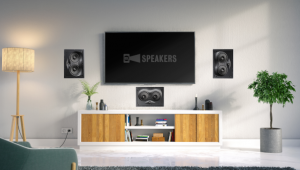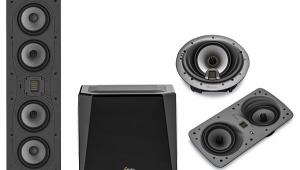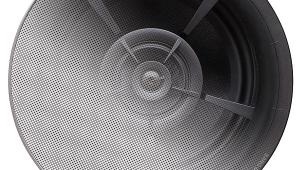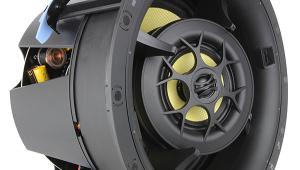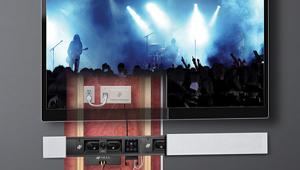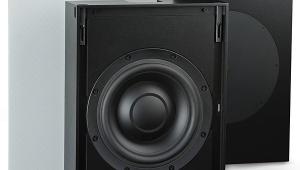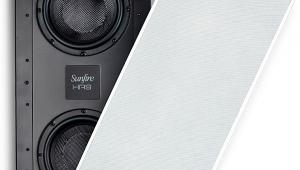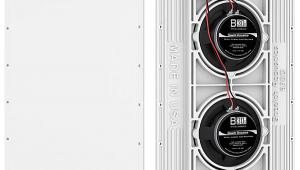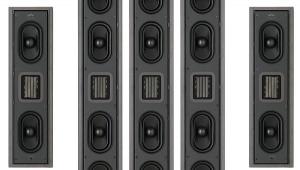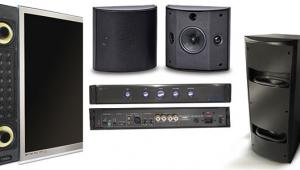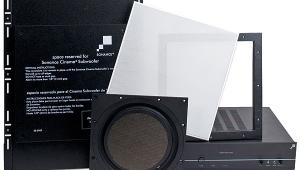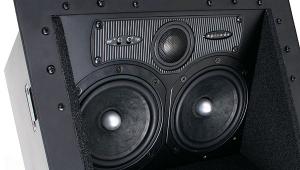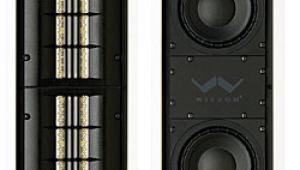Listened to it on Tidal while I read the article. Wow.
GoldenEar Technology Invisa Signature Point Source In-Wall Speaker System Review Page 2
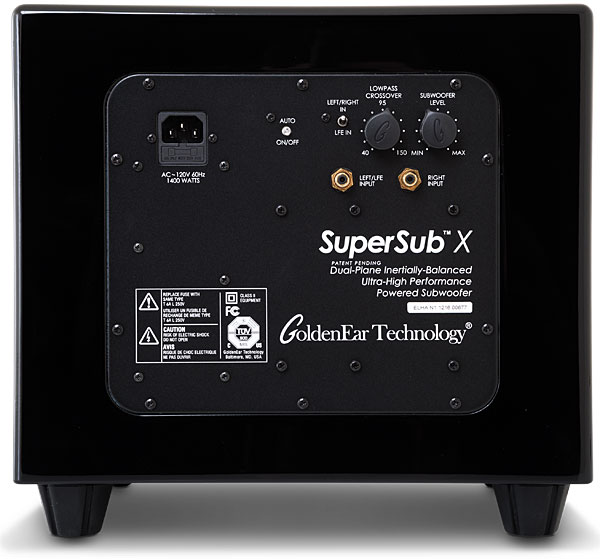
I moved on to “Lullaby of Birdland” from Heather Masse and Dick Hyman’s Lock My Heart. The opening piano notes were not only widely spaced across the front of the room, they also had the same decisive percussive nature that the cello strings had on duoW’s Entendre. In fact, the lively dynamics of the piano across its tonal range were absolutely fantastic for an in-wall speaker. Masse’s sweet and fluid vocals had none of the boxiness or constriction that is often present with in-walls, and her voice was placed solidly in the center—as well as slightly out into the room. What’s more, the entirety of the soundstage had a sense of depth that was totally unexpected from speakers on a flat wall in front of me.
On the subject of soundstage depth and width: “I Need Never Get Old,” the highly energetic opening track by Nathaniel Rateliff & the Night Sweats on their self-titled 2015 debut, had both in spades—starting with a solo guitar way out to the left before it is joined by another guitar equally far to the right. The horns that follow filled in the middle along with the drum kit and were smooth yet crisp, even when the SPS speakers were pushed to high volumes. The projection of the soundstage into the room was even more noticeable here than with “Lullaby of Birdland”—almost to that magical point of breaking out and matching the depth perception generated by an in-room speaker. But even that was bested by “Pocahontas” from Neil Young’s recent Hitchhiker release (of a 1976 recording session), during which I noted, “Damn, that guitar is living in the room!”
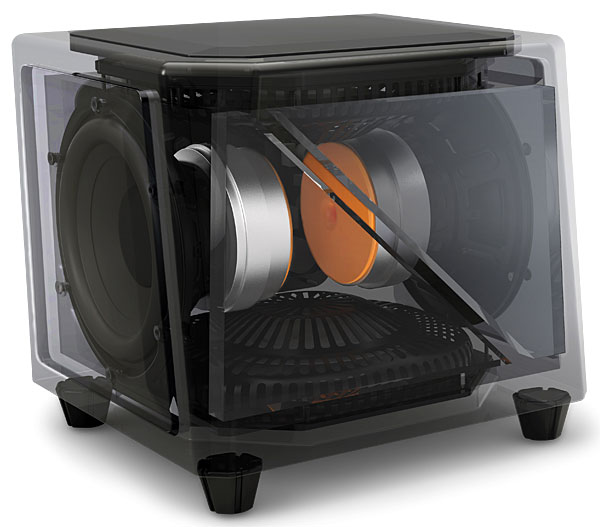
Although I’d already noticed how well the SuperSub X blended with the Invisa SPS speakers, along with how musical it was (especially with the cello on Entendre), I auditioned a perennial favorite of mine: Linkin Park’s “When They Come for Me” (A Thousand Suns). The transition at 80 hertz was imperceptible, and both the tautness and the depth of the drumbeats were amazing—even more amazing when you consider that the SuperSub X is basically a cube that’s less than 14 inches in any dimension.
Wonderfully Wide Wilderness
If ever there was a movie epitomizing the fact that sound is 50 percent of the overall movie experience, Walking Out is it. Set in the remote mountains of western Montana, it follows David, an urban teenager who lives with his mother in Texas, and his nearly off-the-grid father, Cal, who lives on sprawling acreage in those mountains, as they go (reluctantly, in the case of David) on the boy’s first moose hunt. Of course, the movie is more about the attempt of the two to emotionally reconnect than it is about moose hunting. It’s a traditional drama, one in which you’d expect the background music and dialogue to be the only important parts of the soundtrack. But here, while it’s true that there are few “surprise” surround effects (one of the most notable being a number of startled grouse that fly out of the grass directly behind the viewer), the subtle soundtrack is actually one of the main characters.
For a movie like Walking Out, it’s vitally important that the speakers in your system perform as a seamlessly integrated single component—and this is exactly what the Invisa system became. For starters, although I was initially a little concerned about how the SPS speaker mounted horizontally for the center channel would perform, it turned out that the LCR trio was spectacular at smoothly handling sound that panned across the front. Just as important, the horizontal SPS didn’t have any of the boxy, constricted character that you can often get with in-wall center-channel speakers—an attribute I highly appreciated with the dialogue-heavy Walking Out. The full-throated, open character of the horizontal SPS allowed the emotional nuances in the actors’ voices to stand out, since there was nothing extraneous to mask them. This also gave extra emphasis to the sometimes heart-wrenching sound of the violin in the soundtrack.
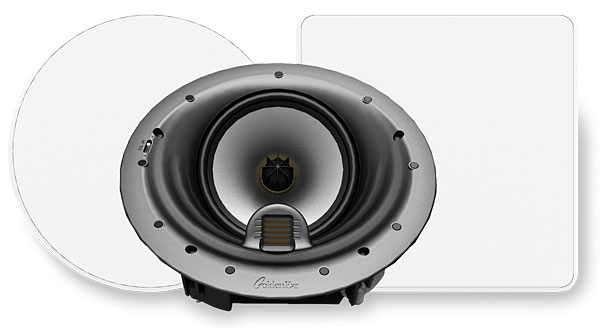
The entire GoldenEar system was absolutely stunning during the outdoor scenes, both in the open fields and in the densely forested mountains, as it re-created a completely seamless audio envelope, bringing the sounds of the wind, animals, and flowing water into the room. A large part of this was obviously due to the wonderfully matched timbre of the speakers. I really can’t say enough about the artistry of the movie’s soundtrack—and the way in which the speaker system reproduced it. Awards should be given to both the movie and the speaker system.
It feels awkward going from the sublimity of Walking Out to the rambunctiousness of Atomic Blonde, but the contrasting styles of the two movies’ soundtracks helped to show that the Invisa system was totally capable of handling shock and awe, too. I’m not sure I can give a good synopsis of this movie, but I can tell you that from nearly its very beginning, this was obviously going to be a thrill ride. Here again, the matching of the MPX surround speakers (and the four HTR 7000s in the ceiling for the height channels) with the front SPS speakers was marvelous. This was clearly demonstrated in a scene where a stolen Stasi car, its trunk in flames, flies overhead from the rear to the front, where it slams into the Berlin Wall and explodes. Later, when MI6 agent Lorraine Broughton (Charlize Theron) is having a conversation in a local bar, initially with a male and then a female Stasi agent, the horizontal center speaker’s openness and extremely close match to the vertical left and right speakers maintained intelligibility of the dialogue regardless of its position across the front. Meanwhile, the ’80s music playing in the background politely filled the remainder of the room, creating a wonderful sense of space behind the close conversation in the front. While I was watching the movie, I wrote in my notes, “One of the best LCR matchups with in-walls that I’ve heard in a long while. Seamlessness defined!”
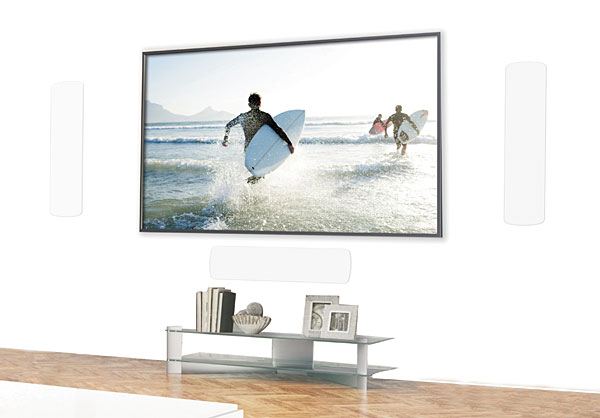
Conclusion
In-wall and in-ceiling speakers get a bad rap—and for good reason. Most are designed with a low price point as the goal, and they merely provide background-music quality. But that doesn’t always have to be the case. GoldenEar Technology’s new Invisa Signature Point Source speakers are proof that you can build an attractive, non-intrusive in-wall loudspeaker offering performance that rivals (and, in some cases, surpasses) that of an equivalently priced in-room speaker.
It’s often said that GoldenEar’s speakers sound as good as other companies’ speakers costing many times more. Architectural speakers are harder to compare using such a blanket statement because installation, size, form factor, and other things need to be considered as well as sound quality. That said, on price alone, I’m not sure you can find another speaker at the $1K price point that sounds anywhere near as fantastic as the Invisa SPS in-wall does—whether it’s for a two-channel or multichannel system. Once again, GoldenEar has set a new high for the performance-to-cost ratio. More important, they’ve done something extremely rare: They’ve created an in-wall loudspeaker that just might convince a die-hard in-room speaker fan.
- Log in or register to post comments

